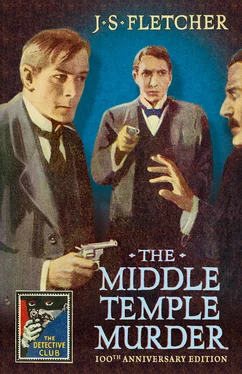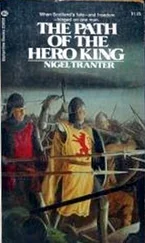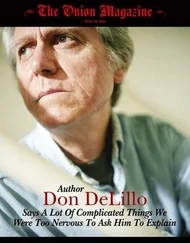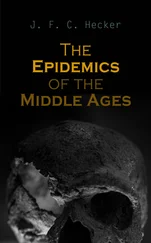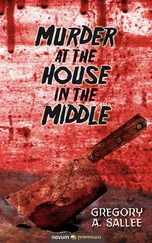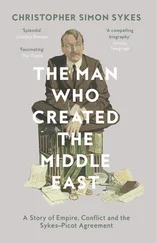In the late-1920s critics began referring to the ‘Fletcher Factory’ or ‘Fletcher Mill’ to describe his prodigious, almost business-like output. His reliable and entertaining novels became a mainstay of public libraries and high-street shops. But the sheer speed of writing and over-production inevitably meant fluctuation in quality. By the mid-1930s Fletcher’s popularity had started to wane. The Golden Age was in full flow in England and had brought in a fresher, more modern style of detection writing; and in America darker ‘hard-boiled’ mystery stories were in vogue, reflecting the recent economic depression. However, Franklin D. Roosevelt kept up the US presidential Fletcher-reading tradition, with several Fletcher detective novels among his summer vacation books in 1934. Fletcher died in January 1935 at his home in Dorking, just short of age 72; his writing career had spanned five decades.
Since his death, Fletcher’s works have largely been out of print and neglected, except for The Middle Temple Murder . There are several evident contributing factors for this decline. Firstly, the older style of Fletcher’s mystery writing: he was from an earlier generation than most Golden Age authors, a contemporary of Conan Doyle. Many of Fletcher’s crime novels pre-date the Golden Age and are mystery adventures and thrillers typical of the Holmesian era; even those written within it are of a very different style. There is no closed form of detection and fair play clueing, and his plots lack the sophisticated puzzles and emphasis on deduction contained in the works of Christie and other Golden Age leading practitioners. Dorothy L. Sayers wrote in 1933, ‘Mr Fletcher does not write detective stories in the modern sense of the phrase,’ rather that he appealed to those readers ‘who like being puzzled, but do not want to sit down to a mystery story as though it were an examination paper.’ As he wrote in various genres, Fletcher chose mostly not to stick with one hero or detective in a series, save for the early Archer Dawe and Paul Campenhaye short stories and one series detective, Ronald Camberwell, a private enquiry agent, who first appeared only in 1931 in the twilight of the author’s writing career.
What of Fletcher’s place within the period as one of its most prolific authors? Fletcher has accurately been described as ‘a journeyman writer … a true professional who knew what his readers wanted (and wanted in quantity) and produced what was needed’. His sleuths were mostly young inexperienced men in unexpected situations, who display energy, dedication and courage to solve problems and uncover hidden truths—quite different to the typical Golden Age professional detectives. His mysteries were well-constructed tales, written with zest and appealing spontaneity; they contain original, ingenious problems, often involving fraud and clever swindles as well as murder, with rapid-paced thrilling incidents and workmanlike storylines, leading to logical but often surprising conclusions. Barzun and Taylor praise Fletcher’s ‘true knack of storytelling and ability to create atmosphere’. Another commentator has written that ‘his stories and characters linger in the mind, his yarns are perfect for their period, and he writes with humour and compassion and not a little empathy and insight’.
Edward Powys Mather, better known as ‘Torquemada’, who reviewed mystery fiction and compiled cryptic crosswords for the Observer in the 1930s, completed Fletcher’s unfinished novel Todmanhawe Grange (1937) after the author’s death, and wrote an Introduction with this tribute: ‘It may be said that with the late J.S. Fletcher, Yorkshireman, journalist, historian and nature lover, the detective story was only a parergon; yet he played a considerable part in its literary development, and the earliest books on his long list of mystery stories were worthy pioneers in an army which has since invested England in its hundreds of thousands’. Fletcher’s novels were translated into fifteen European languages, and even Chinese. His considerable international success throughout the 1920s fuelled the demand for and growth of crime and detective fiction; it also encouraged many of the Golden Age writers who followed and, ironically, have outlasted him in popularity.
And the starting point for this achievement was The Middle Temple Murder .
NIGEL MOSS
June 2018
CHAPTER I Contents Cover Title Page Copyright Introduction I. THE SCRAP OF GREY PAPER II. HIS FIRST BRIEF III. THE CLUE OF THE CAP IV. THE ANGLO-ORIENT HOTEL V. SPARGO WISHES TO SPECIALISE VI. WITNESS TO A MEETING VII. MR AYLMORE VIII. THE MAN FROM THE SAFE DEPOSIT IX. THE DEALER IN RARE STAMPS X. THE LEATHER BOX XI. MR AYLMORE IS QUESTIONED XII. THE NEW WITNESS XIII. UNDER SUSPICION XIV. THE SILVER TICKET XV. MARKET MILCASTER XVI. THE ‘YELLOW DRAGON’ XVII. MR QUARTERPAGE HARKS BACK XVIII. AN OLD NEWSPAPER XIX. THE CHAMBERLAYNE STORY XX. MAITLAND alias MARBURY XXI. ARRESTED XXII. THE BLANK PAST XXIII. MISS BAYLIS XXIV. MOTHER GUTCH XXV. REVELATIONS XXVI. STILL SILENT XXVII. MR ELPHICK’S CHAMBERS XXVIII. OF PROVED IDENTITY XXIX. THE CLOSED DOORS XXX. REVELATION XXXI. THE PENITENT WINDOW-CLEANER XXXII. THE CONTENTS OF THE COFFIN XXXIII. FORESTALLED XXXIV. THE WHIP HAND XXXV. MYERST EXPLAINS XXXVI. THE FINAL TELEGRAM THE CONTENTS OF THE COFFIN Keep Reading … Конец ознакомительного фрагмента. Текст предоставлен ООО «ЛитРес». Прочитайте эту книгу целиком, купив полную легальную версию на ЛитРес. Безопасно оплатить книгу можно банковской картой Visa, MasterCard, Maestro, со счета мобильного телефона, с платежного терминала, в салоне МТС или Связной, через PayPal, WebMoney, Яндекс.Деньги, QIWI Кошелек, бонусными картами или другим удобным Вам способом. The Detective Story Club About the Publisher
THE SCRAP OF GREY PAPER Contents Cover Title Page Copyright Introduction I. THE SCRAP OF GREY PAPER II. HIS FIRST BRIEF III. THE CLUE OF THE CAP IV. THE ANGLO-ORIENT HOTEL V. SPARGO WISHES TO SPECIALISE VI. WITNESS TO A MEETING VII. MR AYLMORE VIII. THE MAN FROM THE SAFE DEPOSIT IX. THE DEALER IN RARE STAMPS X. THE LEATHER BOX XI. MR AYLMORE IS QUESTIONED XII. THE NEW WITNESS XIII. UNDER SUSPICION XIV. THE SILVER TICKET XV. MARKET MILCASTER XVI. THE ‘YELLOW DRAGON’ XVII. MR QUARTERPAGE HARKS BACK XVIII. AN OLD NEWSPAPER XIX. THE CHAMBERLAYNE STORY XX. MAITLAND alias MARBURY XXI. ARRESTED XXII. THE BLANK PAST XXIII. MISS BAYLIS XXIV. MOTHER GUTCH XXV. REVELATIONS XXVI. STILL SILENT XXVII. MR ELPHICK’S CHAMBERS XXVIII. OF PROVED IDENTITY XXIX. THE CLOSED DOORS XXX. REVELATION XXXI. THE PENITENT WINDOW-CLEANER XXXII. THE CONTENTS OF THE COFFIN XXXIII. FORESTALLED XXXIV. THE WHIP HAND XXXV. MYERST EXPLAINS XXXVI. THE FINAL TELEGRAM THE CONTENTS OF THE COFFIN Keep Reading … Конец ознакомительного фрагмента. Текст предоставлен ООО «ЛитРес». Прочитайте эту книгу целиком, купив полную легальную версию на ЛитРес. Безопасно оплатить книгу можно банковской картой Visa, MasterCard, Maestro, со счета мобильного телефона, с платежного терминала, в салоне МТС или Связной, через PayPal, WebMoney, Яндекс.Деньги, QIWI Кошелек, бонусными картами или другим удобным Вам способом. The Detective Story Club About the Publisher
Читать дальше
